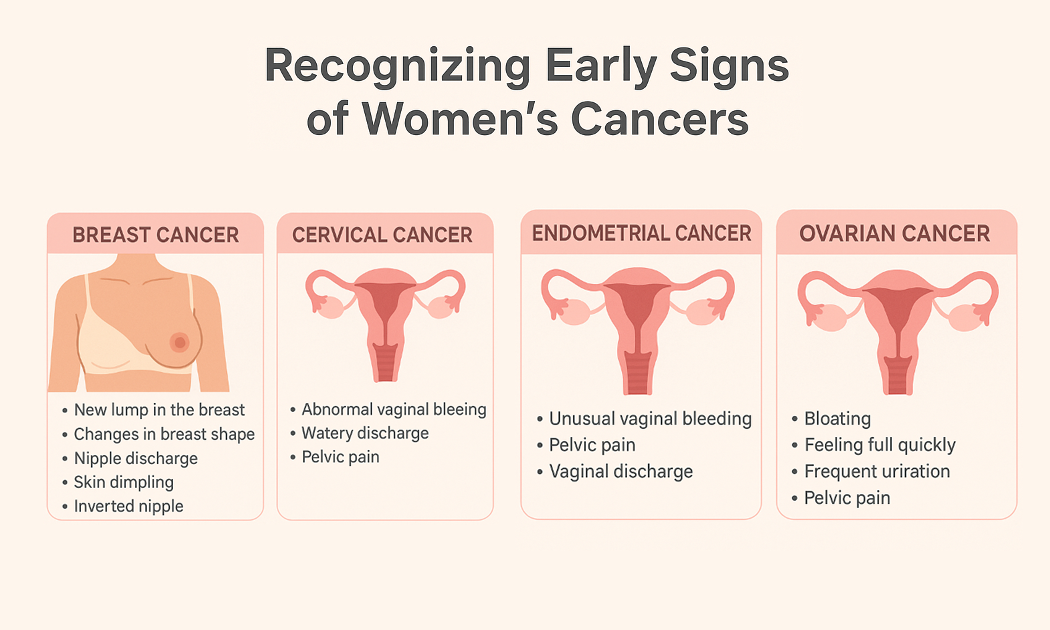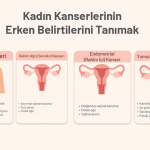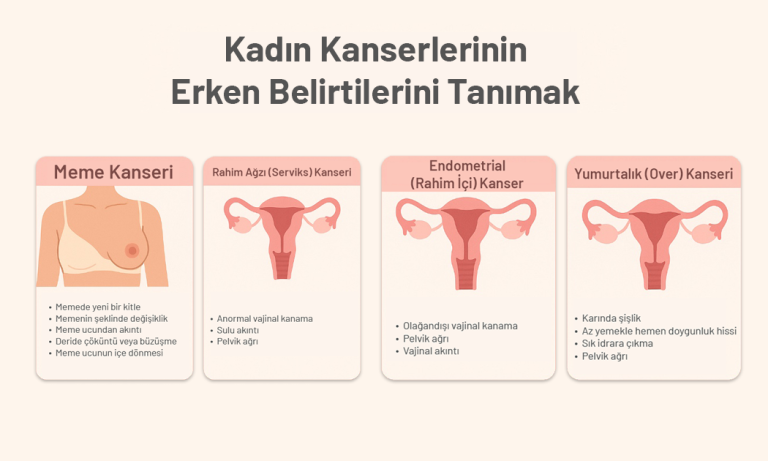How to Recognize Early Signs of Women’s Cancers (Breast, Cervical, Endometrial, and Ovarian Cancers)
How to Recognize Early Signs of Women’s Cancers (Breast, Cervical, Endometrial, and Ovarian Cancers)
Women’s cancers, including breast, cervical, uterine and ovarian cancers, are among the most common and potentially serious health concerns for women worldwide. Early detection plays a vital role in improving survival rates and treatment outcomes. Recognizing early warning signs and understanding changes in the body can be life-saving.
Breast Cancer
Breast cancer is one of the most commonly diagnosed and secound reason of mortality cancers in women. The most noticeable early sign is a new lump or mass in the breast. While not all lumps are cancerous, any new growth should be checked by a healthcare provider. Other signs include:
- Changes in breast shape or size
- Nipple discharge, especially if bloody
- Dimpling or puckering of the skin
- Redness or flaky skin on the nipple or breast
- Inverted nipple (turning inward)
Performing regular self-breast exams and getting mammograms ;especially after age of 40s as recommended to help with early detection.
Cervical Cancer
Cervical cancer develops in the lower part of the uterus and is often caused by the human papillomavirus (HPV). Early stages typically don’t cause noticeable symptoms, which is why regular Pap smears are crucial. Also if risk is significant cotesting (pap smear and HPV testing). When symptoms do occur, they may include:
- Unusual vaginal bleeding, especially after intercourse or between periods
- Watery or bloody vaginal discharge with a foul odor
- Pelvic pain or pain during intercourse
HPV vaccination and regular screening can greatly reduce the risk. For this reason many countries support HPV vaccination.
Endometrial (Uterine) Cancer
Endometrial cancer affects the lining of the uterus and most commonly occurs after menopause. Key early warning signs include:
- Abnormal vaginal bleeding, especially postmenopausal bleeding
- Pelvic pain or pressure
- Unusual vaginal discharge
Women who are overweight, have diabetes, or take estrogen without progesterone are at higher risk and should monitor symptoms closely.
Ovarian Cancer
Ovarian cancer is often called the “silent killer” because symptoms are vague and easily overlooked. Common early signs include:
- Bloating or swelling in the abdomen
- Feeling full quickly when eating
- Frequent or urgent need to urinate
- Pelvic or abdominal pain
- Unexplained fatigue or weight loss
Persistent symptoms lasting more than two weeks should be evaluated, especially if they are new or unusual.
Conclusion
Early detection of women’s cancers significantly increases the chances of successful treatment. Understanding your body and noticing even subtle changes can make a big difference. Routine checkups, recommended screenings (like Pap smears and mammograms), and vaccinations are essential tools in early cancer detection and prevention. If you experience any of the symptoms mentioned above, consult a healthcare provider without delay.







Comments
annabrown
Good Blog!
cmsmasters
Thanks.